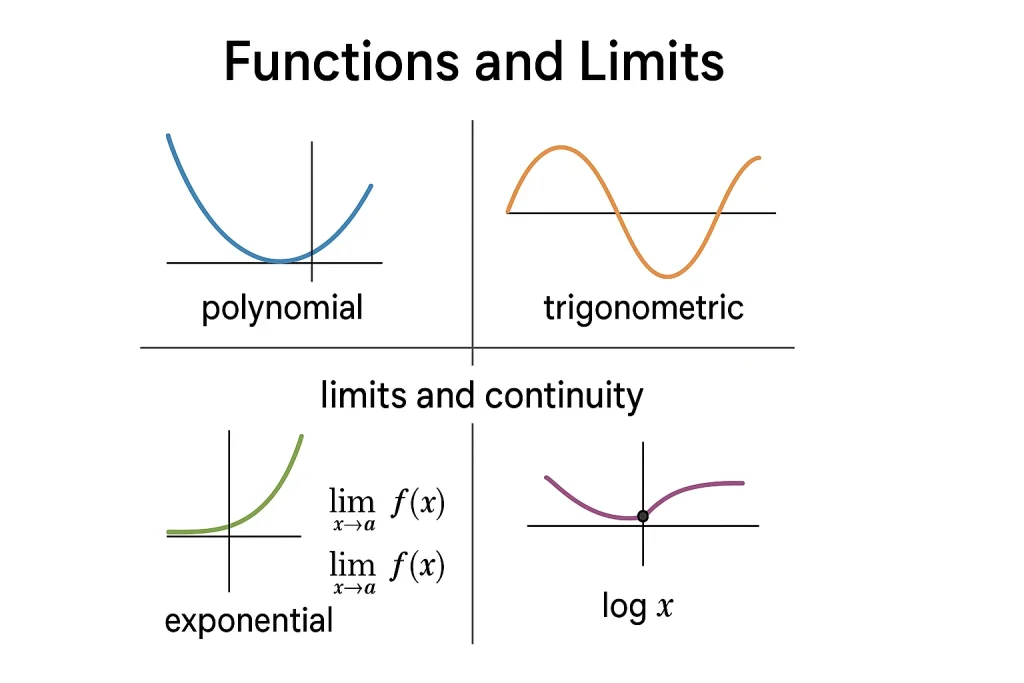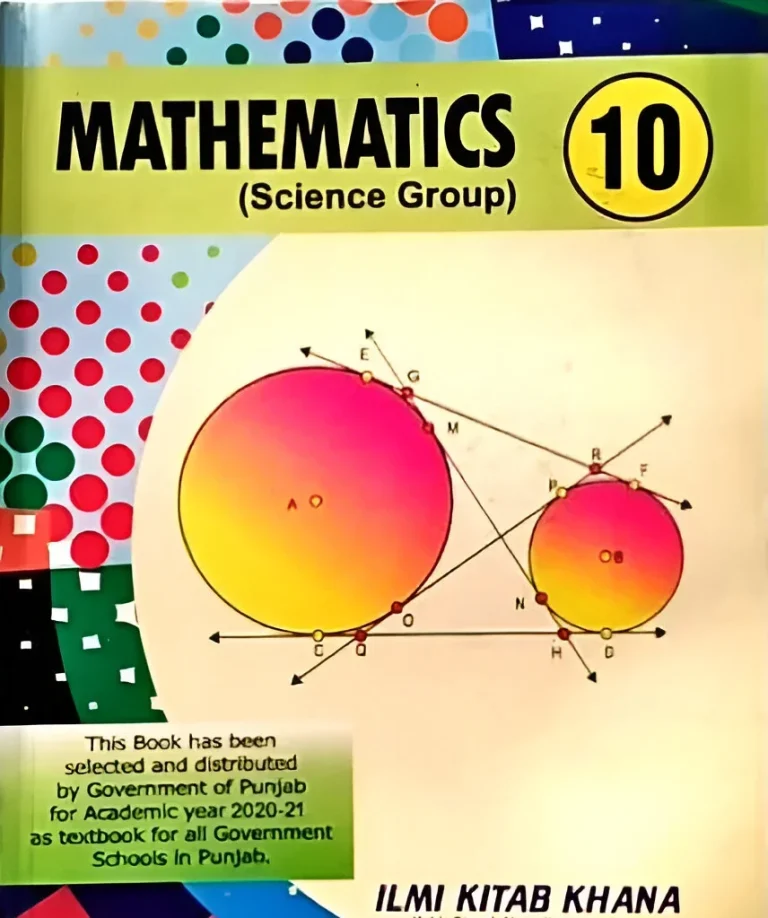📘 Download Class 12 Math Textbook PDF – Punjab Board 2025
Class 12 math textbook (Part 2 of FSc & ICS) builds upon all the concepts you learned in the first year and introduces powerful tools used in science, engineering, and technology. The Class 12 Mathematics Textbook 2025, published by the Punjab Curriculum and Textbook Board (PCTB), focuses on advanced areas like calculus, analytic geometry, vectors, and linear programming — all essential for higher education and competitive exams.
This page offers:
Common mistakes and tips for revision
The official textbook download link
Unit-wise explanations with key concepts and examples
Study strategies to master difficult topics
📅 Download 12th Class Math Book PDF

- 🏛️ Board: Punjab Textbook Board
- 🌐 Language: English
- 📊 Level: Advanced / Intermediate
- 📐💻 Group FSc ICS
- 📖 Format: PDF Document
- 📑PDF format • File Size: ~5 MB
Disclaimer: This textbook is hosted for educational purposes. All content is copyrighted by the Punjab Curriculum & Textbook Board.
🧠 What You’ll Learn in Class 12 Math TextBook
The second year Math book expands your knowledge into advanced topics such as functions, calculus, vectors, analytic geometry, conic sections, and more. These chapters are essential not only for board exams but also for preparing for ECAT, MDCAT, NUMS, NUST, and other competitive tests. Every unit in this book builds critical thinking, problem-solving, and application skills, making it a cornerstone for those pursuing engineering, IT, economics, and sciences.
📚 Unit-Wise Explanation of Class 12 Math Book (FSc Part 2)
Below is a comprehensive explanation of each unit, including main topics, learning goals, and real-life applications.
🔢 Unit 1: Functions and Limits
This foundational unit explores the essential concept of functions, which form the basis for nearly all of advanced mathematics. It begins by introducing students to the idea of a function as a relationship between two sets, where each input from the domain corresponds to exactly one output in the range.
You will explore various types of functions: polynomial, linear, rational, exponential, logarithmic, trigonometric, hyperbolic, and piecewise-defined. The chapter also covers how to determine whether a relation is a function and how to represent functions symbolically and graphically.

Then comes the concept of limits, the heart of calculus. You’ll learn how to evaluate limits algebraically and graphically, understand left-hand and right-hand limits, and tackle problems involving infinity. Important theorems on limits (sum, difference, product, quotient, and power rules) will help you compute limits efficiently.
By the end of the unit, you will:
- Distinguish different function types and behaviors
- Understand how to calculate and interpret limits
- Appreciate the role of continuity and limits in calculus
Important Example:
\(\lim_{x \to 2} (x^2 – 4) = 0\)
Study Plan
- Difficulty: 🔵 Moderate
- Common Mistake: Mixing up one-sided and two-sided limits.
- How to Study:
- Draw graphs to visualize function behavior.
- Practice algebraic limit evaluations daily.
- Review continuity theorems and conditions.
📊 Unit 2: Differentiation
This unit is about understanding how quantities change. Differentiation is introduced as a powerful tool to determine the instantaneous rate of change of a function.
You’ll begin with the definition of the derivative using limits, followed by practical techniques like the power rule, product rule, quotient rule, and chain rule. You will also differentiate trigonometric, exponential, and logarithmic functions.
Moreover, the chapter emphasizes real-world applications. You’ll learn how to find increasing and decreasing intervals, turning points, local maxima and minima, and solve optimization problems in physics and economics.
Important highlights include:
- Marginal cost and revenue in economics
- Concavity and inflection points
- Graphical behavior of derivatives
Example:
\(\frac{d}{dx}(x^2 \sin x) = 2x\sin x + x^2\cos x\)
Study Plan
- Difficulty: 🟠 Hard
- Common Mistake: Forgetting to apply the chain rule or sign errors in product rule.
- How to Study:
- Memorize basic derivatives before tackling composite ones.
- Solve word problems from past board papers.
- Use derivative graphs to understand slope changes visually.
By mastering differentiation, you’ll be able to model dynamic systems and optimize real-life outcomes.
∫ Unit 3: Integration
Integration is the inverse of differentiation, and this unit explores both its theory and application. You start with indefinite integration and gradually move to definite integrals and practical usage.
You will learn rules and methods such as:
- Integration by substitution
- Integration by parts
- Integrating algebraic and transcendental functions
- Using limits in definite integration
The chapter introduces the Fundamental Theorem of Calculus, showing how integration connects with derivatives. Applications include:
- Finding area under curves
- Solving displacement and distance problems
- Work done by a force
- Accumulation in economics and biology
This chapter ensures you not only know how to perform integrations but understand how to apply them in practical fields.
📀 Unit 4: Introduction to Analytic Geometry
Analytic geometry is the bridge between algebra and geometry. This chapter teaches how to use equations to represent geometric figures.
You begin with the basics: coordinate planes, plotting points, distance and midpoint formulas. Then, move to equations of straight lines in different forms:
- Slope-intercept form
- Point-slope form
- General form
Further topics include:
- Conditions for parallelism and perpendicularity
- Collinearity of three points
- Equations of circles and their graphs
You’ll understand how algebra can describe and solve geometric problems—an essential skill in design, physics, and architecture.
📊 Unit 5: Linear Inequalities and Linear Programming
This unit shifts focus to real-world optimization problems. It starts with basic linear inequalities in one and two variables and shows how to graph their solution sets.
Next comes linear programming: a method used to maximize or minimize a function (like profit or cost) under specific constraints. You will:
- Learn to formulate mathematical models
- Identify feasible regions using graphs
- Solve for optimal solutions using corner points
Applications include:
- Resource allocation
- Budget planning
- Transportation and production problems
This unit builds skills useful for economics, business, and decision sciences.
🔹 Unit 6: Conic Sections
Conic sections are curves formed by the intersection of a plane with a cone. This chapter covers all four major types: circle, parabola, ellipse, and hyperbola.
Key learning areas include:
- Identifying conic sections from the general second-degree equation
- Transforming to standard form using completing the square
- Understanding key parts like foci, directrices, axes, and vertices
Each conic is studied in detail:
- Circle: Center-radius form, graphing, and basic properties
- Parabola: Focus-directrix definition, standard equations, real-world uses like satellite dishes
- Ellipse: Foci, major/minor axes, and planetary orbits
- Hyperbola: Asymptotes, conjugate axes, and applications in communication systems
Through geometry and algebra, students gain a full understanding of these unique curves and their significance.
🧱 Unit 7: Vectors
Vectors are fundamental tools for describing quantities that have both direction and magnitude. This unit introduces vector operations and applications.
You will explore:
- Vector addition, subtraction, and scalar multiplication
- Unit vectors, direction ratios, and linear combinations
- Dot product and cross product with geometric meanings
- Applications in geometry and physics
Advanced topics include:
- Position vector and section formula
- Vector equations of lines and planes
- Scalar triple product and volume of a tetrahedron
Vectors help model motion, forces, and 3D transformations, making this chapter essential for science and engineering students.
📁 Bonus Resources
To enhance your learning experience, check out the following:
- 🔗 Class 11 Math Book PDF — Build your foundation
- 🔗 Class 10 Math Book PDF
- 🔗 Class 9 Math Book PDF
- 📊 Graphing Tools: Desmos, GeoGebra — Visualize problems easily
✅ Conclusion: Master Math and Secure Your Future
The Class 12 Math Book 2025 is more than a textbook. It’s a toolkit for solving real-world problems, understanding the world mathematically, and preparing for university-level math.
Whether you’re aiming to top board exams, crack entry tests, or pursue fields like engineering, data science, or architecture, this book equips you with the skills you need.
📅 Download the PDF now and start mastering math today!
📖 Visit NotesOfMath.com regularly for updates, solved notes, and quizzes.
Disclaimer and Copyright Notice:
The Class 12 Mathematics textbook provided on this page is copyrighted by the Punjab Curriculum & Textbook Board. It is hosted here solely for educational purposes to support student learning. We do not claim ownership of the material, and we recommend that users refer to the official PCTB website for the most current and authoritative version. All content is provided as-is, and we encourage students to verify information independently.


